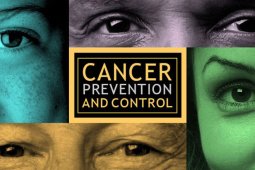Categories
- Bariatric Surgery (11)
- Black Fungus (5)
- Bone Marrow transplant (3)
- Brain Tumor Surgery Navigation Technology (20)
- Cardiac Surgery (66)
- Cardiology (97)
- Computer navigation technology for joint replacements (20)
- Covid Vaccination (17)
- Critical Care (2)
- Dental (19)
- Dermatology (31)
- Dialysis Support Group - “UTSAAH” (11)
- Dietitian (33)
- Emergency Medicine (4)
- Emotional Health (11)
- Endocrinology (33)
- ENT (20)
- Gastroenterology and GI Surgery (53)
- General and Laparoscopic Surgery (21)
- General Surgery (4)
- Gynecology & Obstetrics (183)
- Hematology (20)
- Internal Medicine (294)
- Kidney Transplant (50)
- Kidney Transplantation (20)
- Lung Cancer (8)
- Minimal Invasive Surgery (1)
- Mother & Child (20)
- mucormycosis (5)
- Nephrology (61)
- Neurology (147)
- Neurosurgery (68)
- Nutrition and Dietetics (107)
- Omicron Variant (1)
- Oncology (288)
- Ophthalmology (10)
- Orthopaedics & Joint Replacement (86)
- Paediatrics (59)
- Pediatric Nephrology (3)
- Physiotherapy (5)
- Plastic & Reconstructive Surgery (6)
- Psychiatry and Psychology (90)
- Psychologist (28)
- Pulmonology (72)
- Rheumatology (13)
- Spine Services (21)
- Transradial Angioplasty (16)
- Urology (84)
Query Form
Posted on Apr 19, 2022
Management of Breast Cancer
Breast Cancer is the 2nd most common cancer in females in our country only being surpassed by cancer-cervix. Most breast cancers are sporadic and due to multiple factors including hormonal and environmental. About 5-10% cancers are familial or hereditary.
Common risk factors for Breast Cancer are:
- History of breast cancer in 1st and 2nd degree blood relations
- Positive BRCA1 and BRCA2 gene mutations in blood testing.
- First birth after 30 years of age
- Early menarche
- Late menopause
- No child or 1 child
- Prior breast biopsies
- Long term post menopausal estrogen replacement
- Early exposure to ionizing radiation.

Signs and symptoms of Breast Cancer:
Most common presentation is a painless, lump in breast. Other symptoms are-
- Inverted nipple
- Nipple discharge especially bloody discharge
- Skin thickening, ulceration, dimpling of skin
- Orange peel appearance of skin
- Lump in axilla
Sometimes, it presents with symptoms of metastatic (Disseminated) disease, like bony pain, paralysis, convulsions, cough, loss of appetite.
Tests required for Diagnosis of Breast Cancer:
For diagnosing breast cancer & to find if it has spread to other body parts, we have to perform some or all of the following tests:
- Bilateral sono- mammography (80-90% accuracy)
- Fine Needle Aspiration Cytology
- Core needle biopsy
- FNAC’s and biopsy should preferably be done under ultrasound guidance for exact localization
- Estrogen reception /progesterone receptor and Her2nu studies are done on biopsy specimen
- MRI of the breast is done for non palpable/ doubtful lessons on sono mammography, and for patients undergoing breast conservative surgery, as sometimes, there might be two or more lumps in the same breast.
- The tests are done to know stage of breast cancer and if it has spread to other parts of body. The tests are X-ray chest, ultrasound whole abdomen, bone scan, CECT chest/abdomen and PET scan
For treatment point of view, Breast Cancer can be divided into three broad categories:
- Early Breast Cancer (Stage I and II)
- Locally Advance Breast Cancer (Stage III)
- Metastatic Breast Cancer (Stage IV)
The treatment scheme is finalized by the team of doctors, specialized in cancer care treatment – comprising of Surgical Oncologist, Medical Oncologist, Radiation Oncologist, plastic Surgeon, Pathologist, Rehabilitation Team, Onco Nurse.
Early breast cancers i.e. – Stage I and II cancers are treated with surgery, systemic therapy (chemotherapy and/or hormonal therapy) + Radiotherapy.
Surgery is used to treat the primary breast lump and the armpit (Axilla). Modified Radical Mastectomy is the most common surgery performed. In this surgery the whole of Breast is removed along with the nipple and armpit (axillary) nodes are excised.
Nowadays the focus is on breast preservation (To save the breast) and more and more of breast conservative surgeries are done, In which the Tumor is excised along with 1-2 cm of surrounding breast tissue.
For cosmetic reasons, silicone prosthesis (artificial breast) & plastic surgery (myocuteneous flaps) can be done to reconstruct the breast & nipple.
Almost all patients are given some form of systemic therapy (Chemotherapy/Hormonal Therapy). All patients with breast preservation, receive radiotherapy.
Post Treatment Follow ups are important:
Follow up of these patients is done with clinical examination, every 3-6 monthly for first 3 years and then 6-12 monthly for next 2 years and then annually.
- Monthly breast self examination
- Annual Mammography
- Annual Pap Smear and Pelvic Examination in women on Tamoxifen
- Blood testings and imaging studies (Bone Scan, CT Scan, PET Scan) are not routinely recommended, unless symptoms are present.



